Design Process
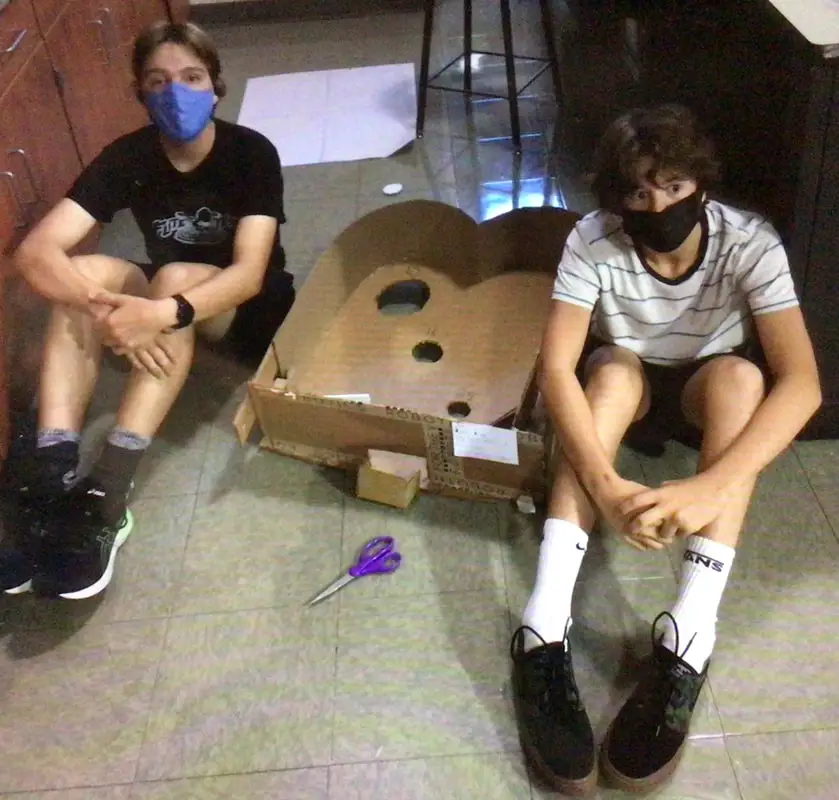
Define a Problem
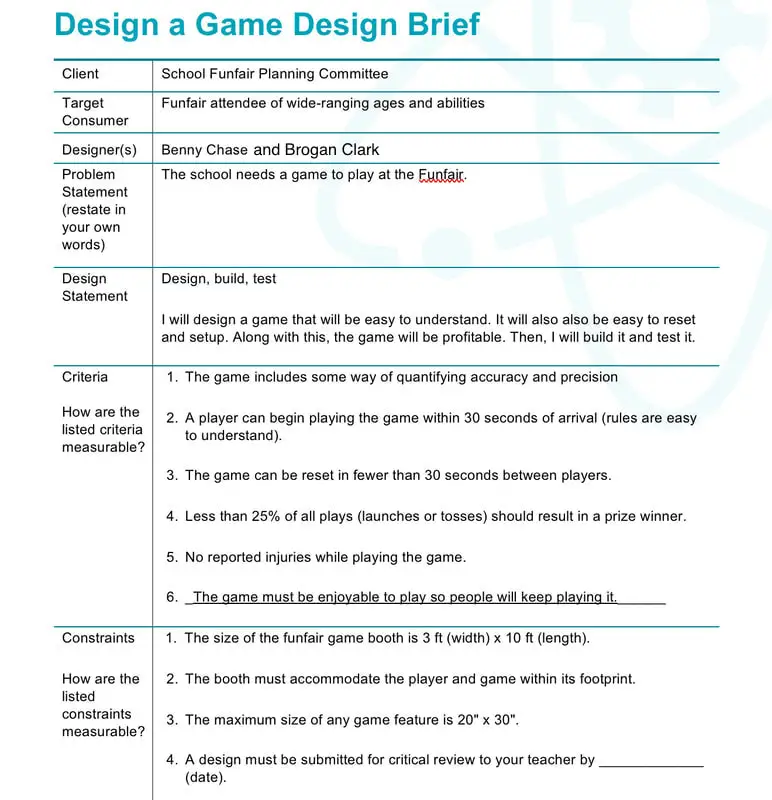
Generate Concepts
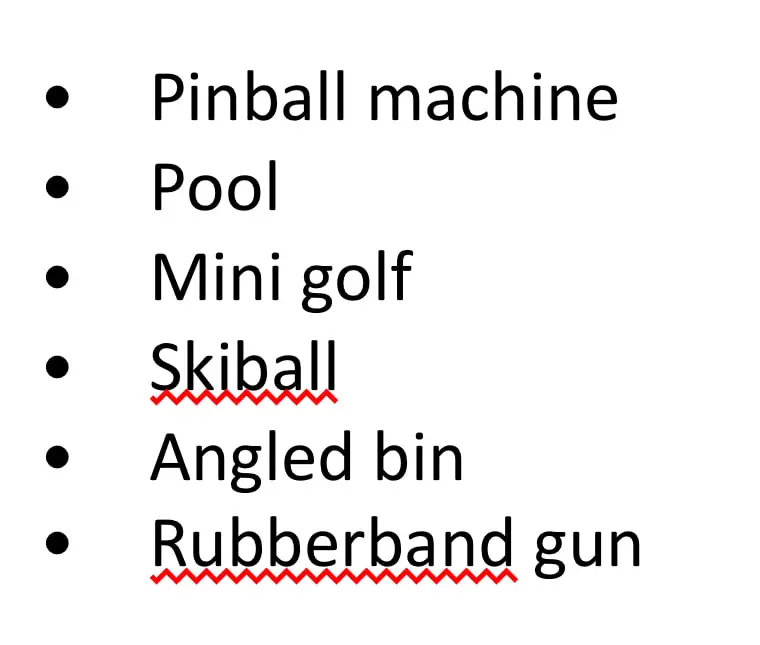
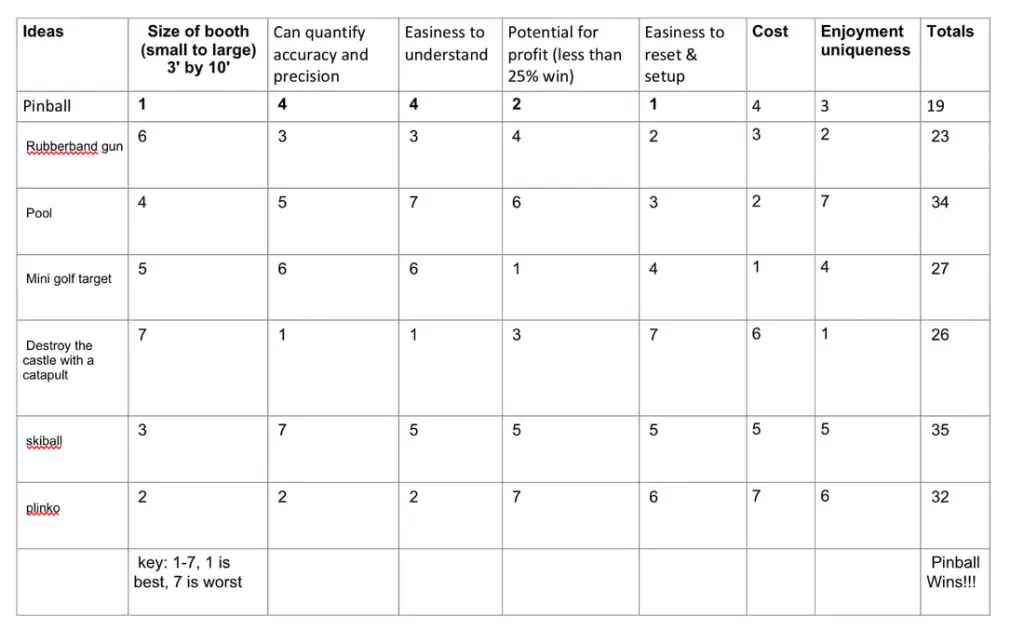
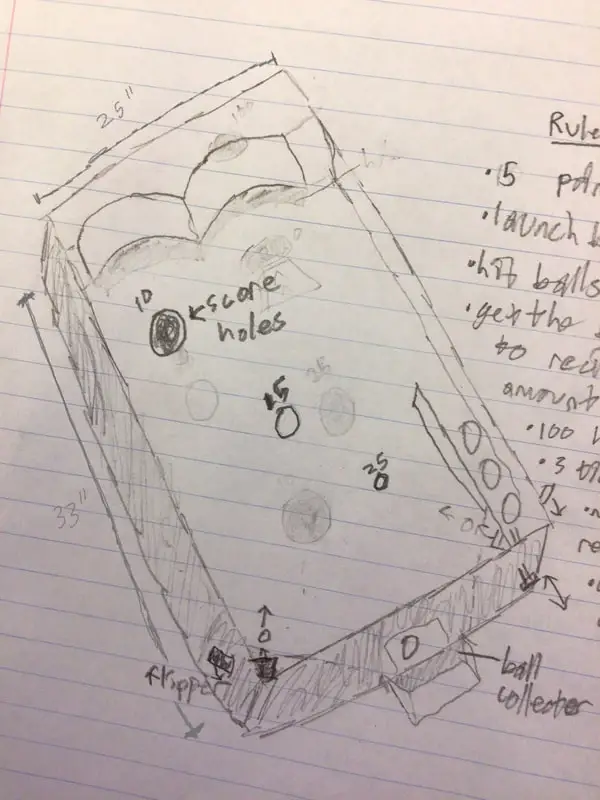
Making a pinball machine is the best choice since it is small, easy to reset and setup, profitable, and very fun to play. This can be seen in the decision matrix
Develop a Solution

Game rules and instructions:
* 4 tickets = 3 balls (1 round)
* Every 5 points earned = 1 ticket
* A lip-out (where the ball goes in a hole but bounces back out) = 0 points for that ball
* Once the ball goes in a hole, it stays in the hole for the rest of the round
* No cheating, and don't break the pinball game. Cheating or breaking the game will result in 0 points for the entire round.
Funfair booth setup documentation:
Our game is very easy to setup. Just place the pinball game on a surface, and wait for the players to come. 3 balls costs 4 tickets.
Construct and Test Prototype
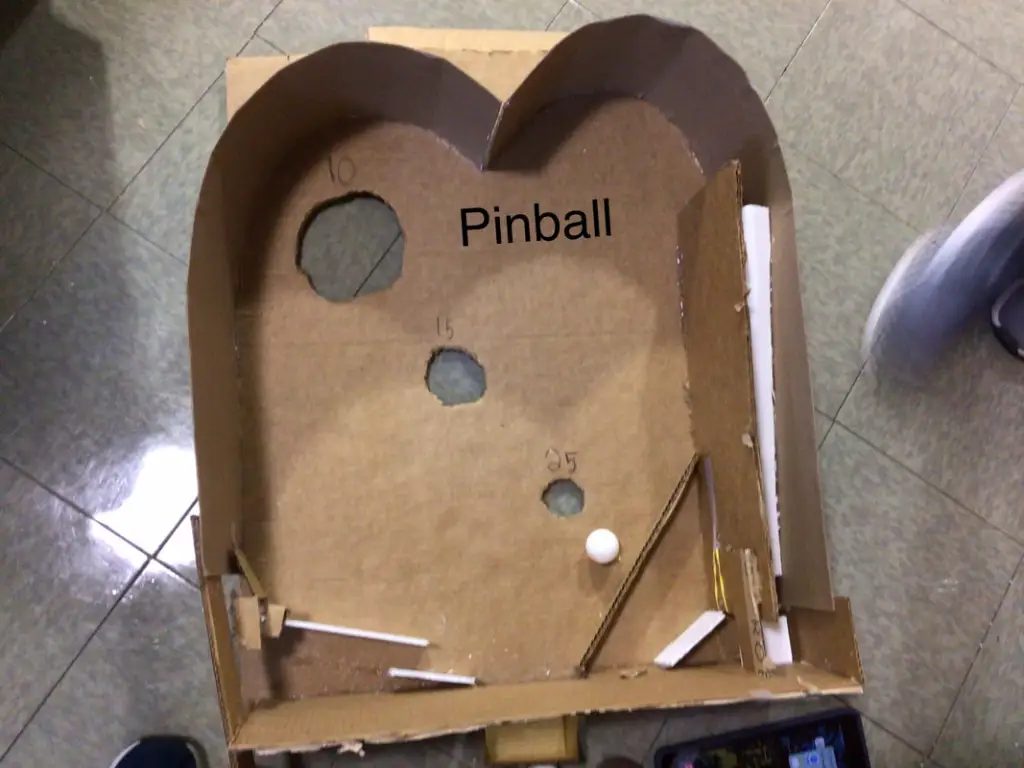
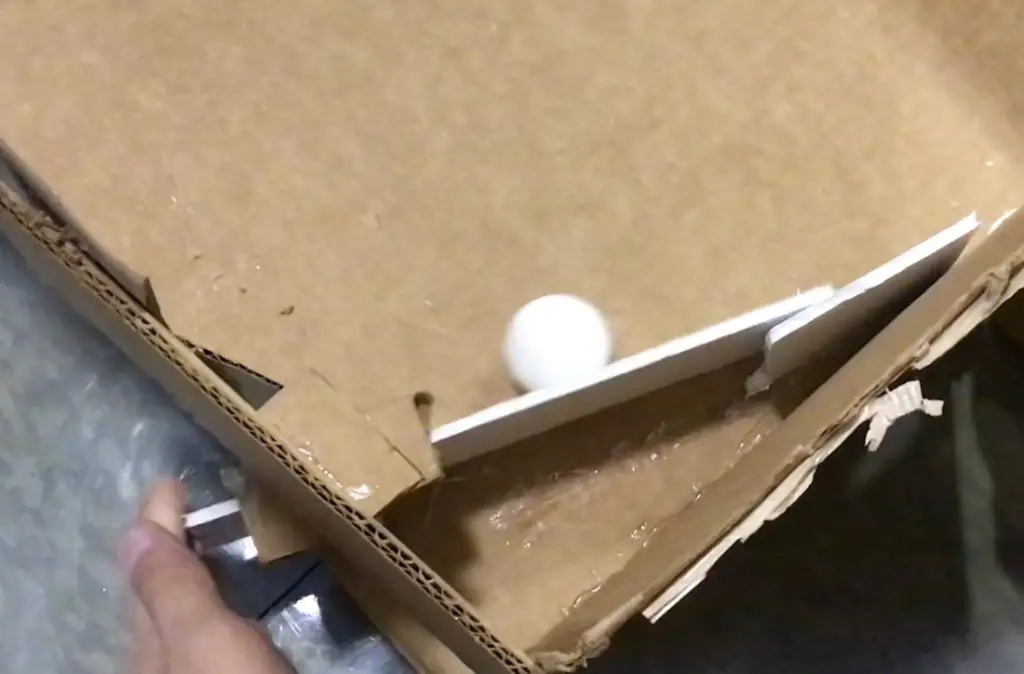
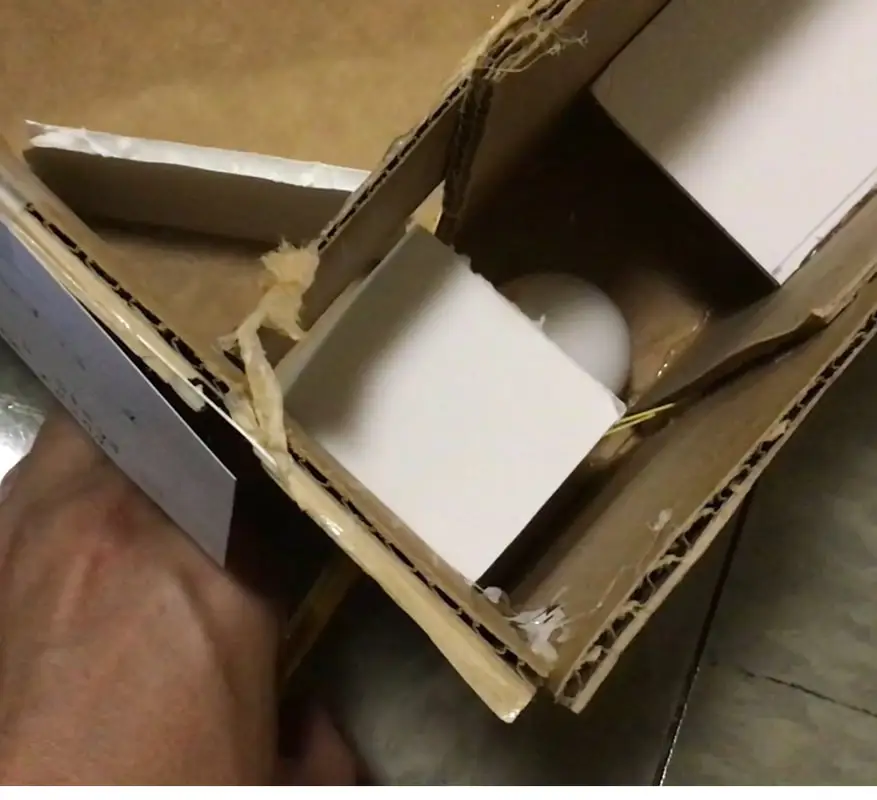
Above: 3 pictures of the pinball machine in action and the mechanisms working.
These include the entire machine, the flipper, and the launcher mechanism.
Test data and analysis (below)
Mathematical model (using a spreadsheet) for required accuracy and precision to win a prize. (below)
Our criteria required the game to have less than 25% of the games win. Our game wins 10% of the time.
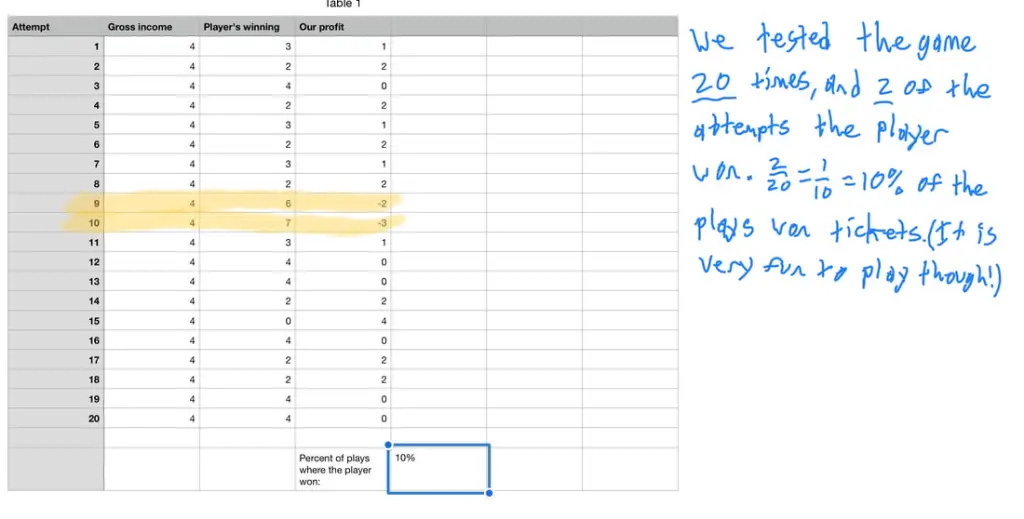
Evaluate Solution
When making the pinball game, we had to figure out how to mount the rubber bands for the launcher. We figured out that tape was the best option since it was strong and since hot glue did not stick to the rubber bands. We also realized that you could take the flipper part out, so we glued another little piece on so it cannot be removed. Pinball machines are slanted so the ball comes back down, so we had to make it slanted. Our first method was to hot glue a piece of cardboard on the bottom perpendicular to the bottom surface in the back. This crumpled. We fixed this by gluing a box on the bottom in the back, and making sure the height stayed the same and it was strong for consistency. If we had more time, maybe we could have added a second flipper and a ball collection system on the bottom for when the balls go in the holes.
Present Solution
Proposal to “carnival committee”:
Pinball is a great choice as a carnival game. It is profitable 90% of the time, so players play more if they win and are not disappointed.
You will profit from the game. The game is small, portable, low maintenance, and easy to understand.
It is also made of recycled cardboard, so it is inexpensive and environmentally friendly.
The game is safe to use since the balls do not move at high velocity and are ping pong balls.
Players love pinball, and it will be a huge attraction to many customers.
Ethical considerations of the game:
The game is not rigged. We have no influence on the game other than making it. We are not part of the game.
The game is not biased since there is a limit to how much skill you can have playing the game.
The game is fair because anyone can play the game, and it does not require much skill.
It is politically correct (PC) as there are no offensive references to others in the game.
Reflection and Recommendations:
The game project worked very well. It was super fun! I learned how to use the design process to help with the making of pinball.
The decision matrix really helped us decide which game to use, it is much more useful than just pros and cons.
We worked great together as a team, and the building was quick. We used time very efficiently.
Next year, it would be good to provide maybe another day to add more features and modify the games to make them better.
Also, it would be cool if we could use Mrs. Gallo's laser cutter or 3D printers for some special parts.
And what would be really awesome? Having a fun fair where people get to play the games! (maybe after school)
Overall, it has been an awesome project, I learned so much and had lots of fun! Hands on is the way to go!